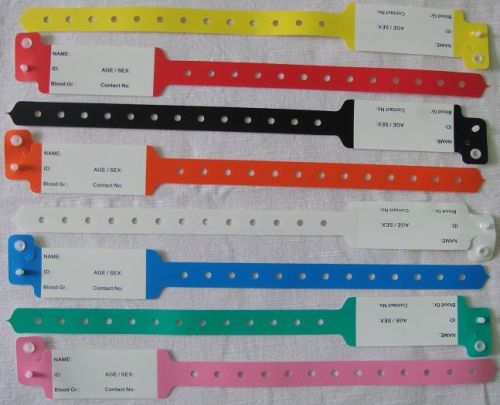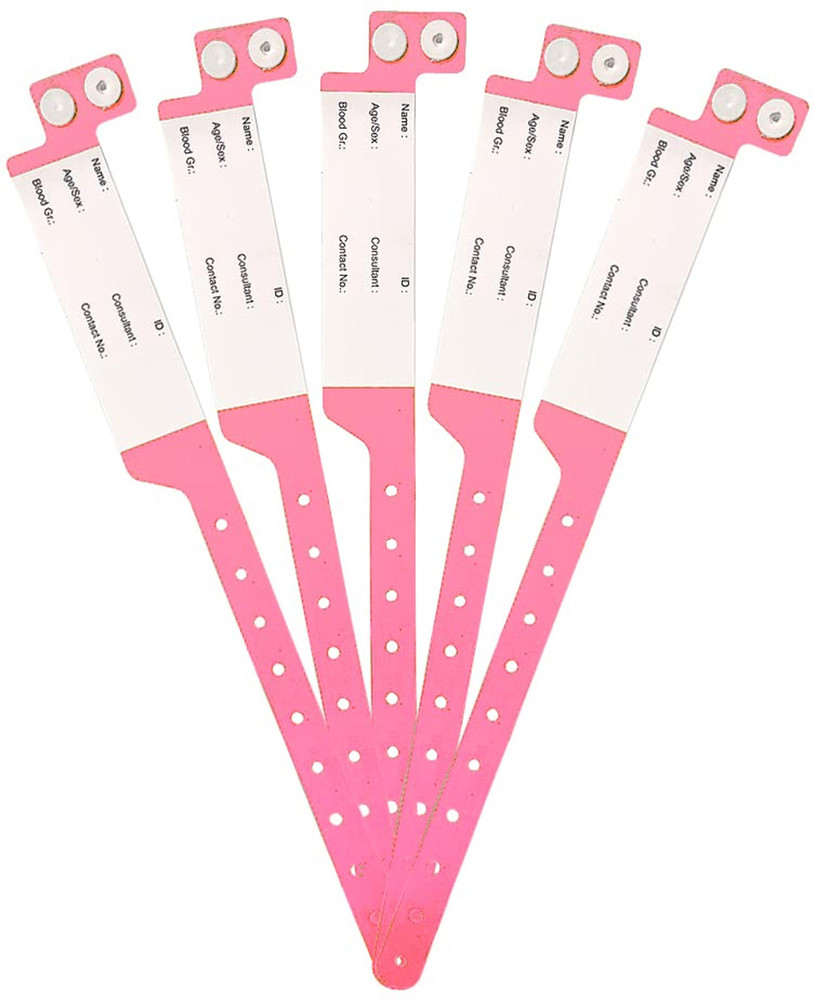Discovering the Various Sorts Of Patient Identification Band Made Use Of in Medical Facilities
In the complex world of healthcare, the essential function of Patient Identification bands often goes unnoticed. These bands, varying from basic paper wristbands to advanced RFID bands, form the backbone of Patient safety and security protocols, guaranteeing accuracy in Patient Identification. The vast variety of these bands, each with its special advantages and limitations, is typically forgotten. As we navigate through this topic, one may get understanding into the subtle intricacies and crucial relevance of such bands in clinical centers.
Understanding the Relevance of Patient Identification Bands
While they may feel like plain devices, Patient Identification bands play an important role in medical centers. These bands function as an important device for confirming Patient identification, preventing clinical errors associated with misidentification. The bands usually show necessary details such as the Patient's name, age, blood type, and any kind of known allergies. They allow medical care professionals to rapidly access this critical details, thus promoting prompt and precise medical therapy. Patient Identification bands also help in enhancing management jobs, making sure accurate record-keeping and billing. Despite their simplicity, these bands personify the principle of Patient security, a keystone of top quality healthcare. Without them, the danger of medical errors, and as a result, Patient damage, might substantially raise.
Typical Paper Wristbands: Their Usage and Limitations
Typical paper wristbands have been a staple in Patient Identification throughout various medical facilities. While their usage prevails, they harbor specific constraints that may impact their efficiency in Patient management. This area will certainly focus on the range of their application and the intrinsic downsides associated with their use.
Paper Wristbands: Usage Extent
In the world of Patient Identification, paper wristbands have actually long held an essential duty. These bands are commonly utilized in outpatient settings, where the Patient's stay is short-term. Despite innovations in modern technology, the humble paper wristband stays a trustworthy and cost-efficient solution for Patient Identification in different healthcare situations.
Limitations of Paper Wristbands
In spite of their prevalent use, paper wristbands are not without their downsides. Their physical toughness is among the substantial constraints. Direct exposure to water, sweat, or rough handling can render them unreadable or also create them to break down. In enhancement, paper wristbands usually lack the technical abilities of even more modern-day choices, such as barcoding or RFID chips, restricting their functionality to simply presenting created details. The lack of ability to update or customize the information on the wristband is one more imperfection. If the info is transcribed, clarity can be jeopardized, leading to possible misidentification. Finally, paper wristbands can create discomfort or skin inflammation to some patients, especially when worn for extensive durations.
Barcoded Wristbands: Developments in Patient Identification
While Patient Identification has actually long been a crucial facet of medical care, the introduction of barcoded wristbands indicates a significant leap onward. These bands take advantage of the simpleness of barcoding innovation, enabling Patient details to be promptly checked and accessed. They enhance the speed and precision of Patient Identification, decreasing the risk of medical errors associated to misidentification. Barcoded wristbands are economical, simple to generate, and get rid of handwriting errors usual with manual systems. They are not without constraints. While they provide improvements over conventional bands, the barcode can become worn or smudged, making it unreadable. Despite this, barcoded wristbands stay a crucial device in contemporary health care setups, representing the intersection of technology and Patient treatment.
Radio Regularity Identification (RFID) Bands: an Action Towards Futuristic Medical Care
The development of Patient Identification bands has brought concerning the development of Superhigh frequency Identification (RFID) Bands (patient identification band). These innovative tools existing key advantages for healthcare facilities, using a more effective and technically advanced ways of Patient Identification. The application of RFID in health care is a considerable step in the direction of an extra futuristic approach to Patient administration and safety
Comprehending RFID Bands

RFID Bands: Key Benefits
Embracing a future where innovation and health care merge, radio frequency Identification bands use several essential advantages. Mainly, these bands enhance Patient security by giving precise, instant Identification, therefore minimizing clinical errors. RFID bands can save a substantial quantity of Patient information, including case history and allergic reactions, enabling personalized care. They also simplify management jobs, as the automated data entrance changes manual procedures, enhancing efficiency and reducing documents. RFID bands supply real-time tracking of people, crucial in risky environments such as surgery or extensive care. These bands are resistant and sturdy to environmental factors, guaranteeing constant performance. Generally, RFID bands stand for a substantial innovation in Patient Identification innovation, benefiting both clients and health care suppliers.
Executing RFID in Healthcare
As we tip into a technically sophisticated age, the execution of RFID bands in healthcare comes to be increasingly important. These bands offer a smooth means to track and identify clients, ensuring their safety and security and boosting efficiency in treatment procedures. RFID bands provide many benefits over traditional Identification methods. They can store a vast amount of data, including the Patient's case history and treatment plans, which can be easily accessed by doctor. This data assists physicians make informed decisions relating to the Patient's treatment strategy. Moreover, RFID bands reduce medical errors by giving accurate Patient Identification, which is important in stopping misdiagnosis or incorrect medicine management. Therefore, the application of RFID bands is a significant step in the direction of enhancing Patient safety and security and healthcare shipment.

Color-Coded Wristbands: Aiding in Quick and Accurate Diagnosis
In the bustling environment of a medical facility, color-coded wristbands have arised as essential tools for swift and accurate Identification of a client's medical condition. These wristbands, used by individuals, lug particular colors that correspond to various medical problems or conditions. This system is developed to offer instant visual cues to health care service providers, improving Patient safety and care top quality.
Approaches for Efficient Implementation and Administration of Patient ID Bands
Achieving ideal use of Patient Identification bands requires a well-structured approach for their implementation and management. The initial step involves training all health and wellness employees on the value of correctly using and reviewing these bands. Second of all, healthcare facilities ought to standardize click over here now making use of ID bands across all departments, making certain harmony and reducing inconsistencies. Routine audits must be conducted to validate adherence to policies and to remedy any kind of disparities. Patient education and learning is additionally vital; individuals have to understand the function of the bands and the requirement for their check over here constant wear. patient identification band. Finally, it's vital to have a back-up plan in place, such as barcode scanning or biometrics, to make certain that Patient Identification is never endangered.
Conclusion
Patient Identification bands are essential in medical facilities to make sure safety and precision. Efficient application and administration of these bands can dramatically minimize medical mistakes, boost efficiency, and improve total Patient care.
These bands, differing from easy paper wristbands to sophisticated RFID bands, develop the foundation of Patient safety protocols, guaranteeing accuracy in Patient Identification.The evolution of Patient Identification bands has actually brought about the introduction of Radio Regularity Identification (RFID) Bands. Generally, RFID bands represent a significant development in Patient Identification innovation, benefiting both people and medical care suppliers.
RFID bands minimize medical errors by providing precise Patient Identification, which is crucial in preventing misdiagnosis or wrong medication administration. Patient education and learning is likewise important; individuals have to understand the purpose of the bands and the demand for their continuous wear.